Radeon HD 5770 And 5750 Review: Gentlemen, Start Your HTPCs
ATI’s Radeon HD 5770 And 5750
There’s really no need to rehash all of the architectural elements that comprise the Radeon HD 5770 and 5750—if you want to know more about how ATI improved this generation’s architecture over RV770, check out our original Radeon HD 5870 review. When I say that the Radeon HD 5770 is half of that flagship, I’m being literal.
As mentioned, the Juniper GPU consists of 1.04 billion transistors (to Cypress’ 2.15 billion). It sports 800 ALUs (to Cypress’ 1,600). It leverages 40 texture units (to Cypress’ 80). It boasts 16 ROPs (to Cypress’ 32). I think you get the picture here. If not, a die block diagram comparison should do the trick:
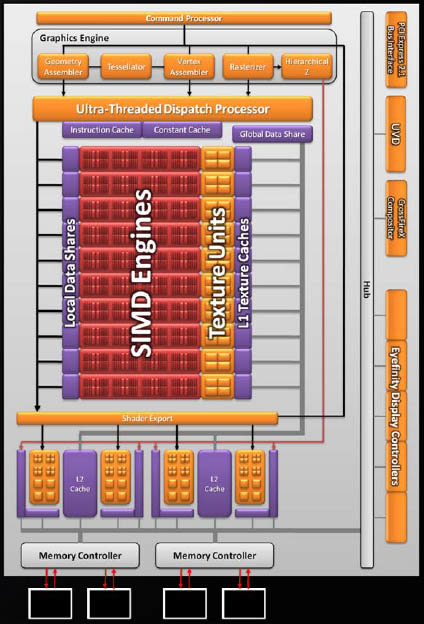
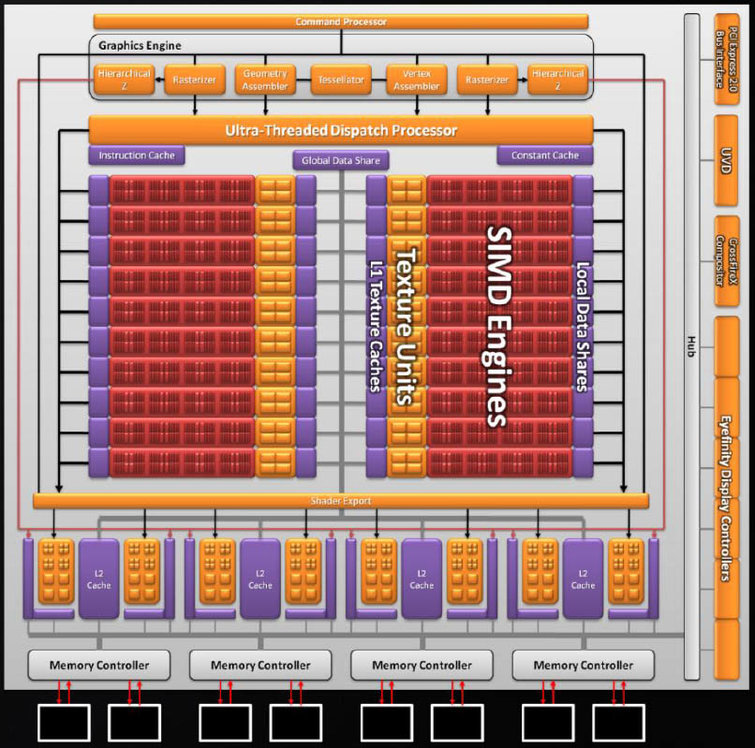
Even the speeds and feeds work out comparatively. Radeon HD 5870 employs 1GB of GDDR5 memory running at 1,200 MHz, delivering 153.6 GB/s. The Radeon HD 5770 also sports 1GB of GDDR5 at 1,200 MHz, serving up 76.8 GB/s. Eight hundred “shader processors” times 850 MHz times two gives the Radeon HD 5770 1.36 TFLOPS of compute power, versus the 5870’s 1,600 * 850 MHz * 2 = 2.72 TFLOPS.
| Header Cell - Column 0 | Radeon HD 5770 | Radeon HD 5750 | Radeon HD 4870 |
|---|---|---|---|
| Compute Performance | 1.36 TFLOPS | 1.008 TFLOPS | 1.2 TFLOPS |
| Transistors | 1.04 billion | 1.04 billion | .956 billion |
| Memory Bandwidth | 76.8 GB/s | 73.6 GB/s | 115 GB/s |
| AA Resolve | 64 | 64 | 64 |
| Z/Stencil | 64 | 64 | 64 |
| Texture Units | 40 | 36 | 40 |
| Shader (ALUs) | 800 | 720 | 800 |
| Idle Board Power | 18W | 16W | 90W |
| Active Board Power | 108W | 86W | 160W |
Thus, all of the same architectural balancing that went into the Radeon HD 5870 should carry over here, and we should see a performance picture as good or better than what ATI’s Radeon HD 4870 was able to do, given its 800 shader processors at 750 MHz (totaling 1.2 TFLOPS)and GDDR5 memory running at 900 MHz.
Oh, but there’s a rub. The Radeon HD 4870 also employed a 256-bit bus, giving it 115.2 GB/s of memory bandwidth. We’ll have to see how that notably different specification affects the overall performance picture. If there's an Achilles's heel that causes the 5770 to stumble, that will be it.
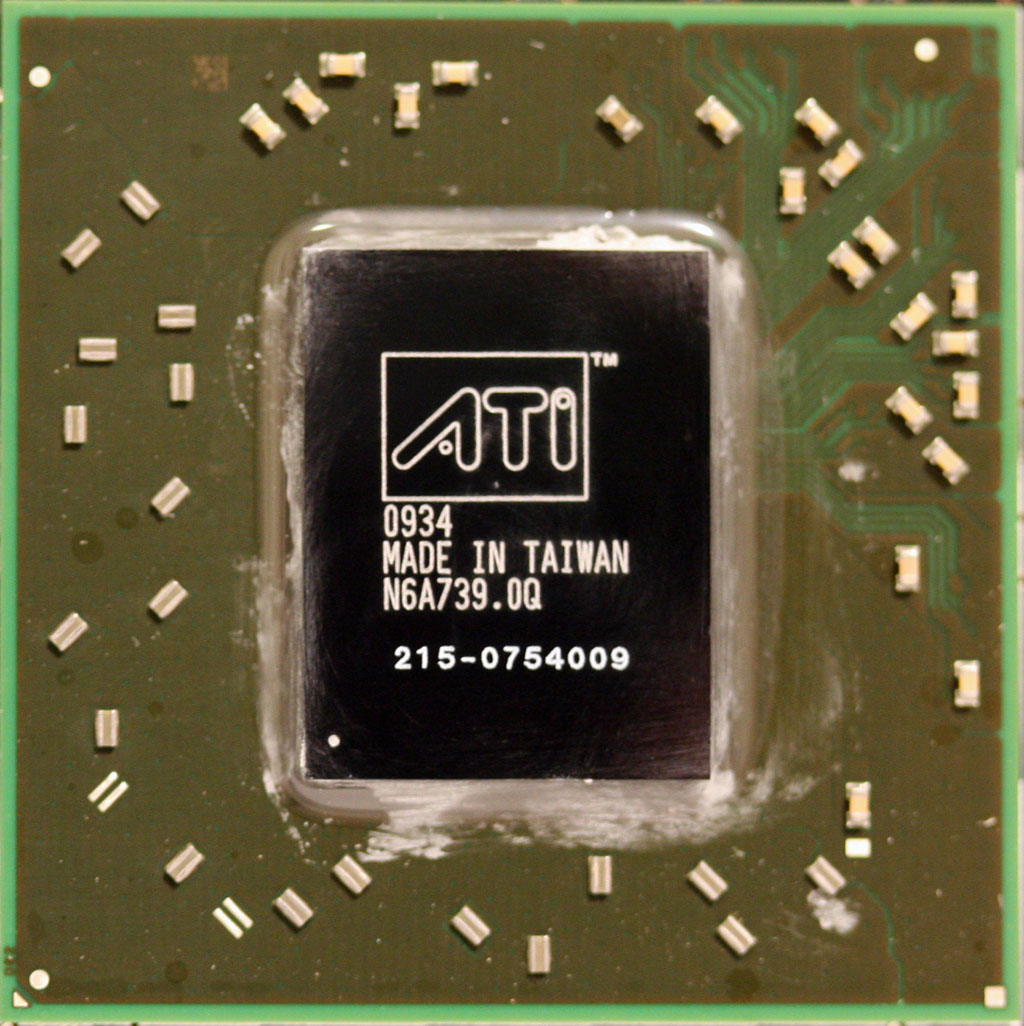
The Radeon HD 5750 centers on the same Juniper GPU as its big brother. ATI disables one of the chip’s 10 SIMD cores, switching off 80 ALUs and four texture units. The processor’s core clock is then decelerated to 700 MHz, yielding a nice round 1 TFLOPS of compute muscle. ATI doesn’t mess with the GPU’s back-end, so you still get 16 ROPs and a 128-bit memory bus loaded with 1GB of GDDR5 memory. However, the clocks there are slightly lower too, yielding 73.6 GB/s from the 1,150 MHz RAM.
The Boards
Stay On the Cutting Edge: Get the Tom's Hardware Newsletter
Get Tom's Hardware's best news and in-depth reviews, straight to your inbox.
The Radeon HD 5770 itself is shorter than the Radeon HD 5850, which was already shorter than the behemoth Radeon HD 5870. At 8.5” (an inch less than the 5850), it’s a very chassis-friendly card.
As with the larger Cypress board, the 5770 employs rear-mounted auxiliary power, though it only needs one connector instead of two. Further, ATI recesses the plug a bit, so protruding cables are less likely to get in the way.
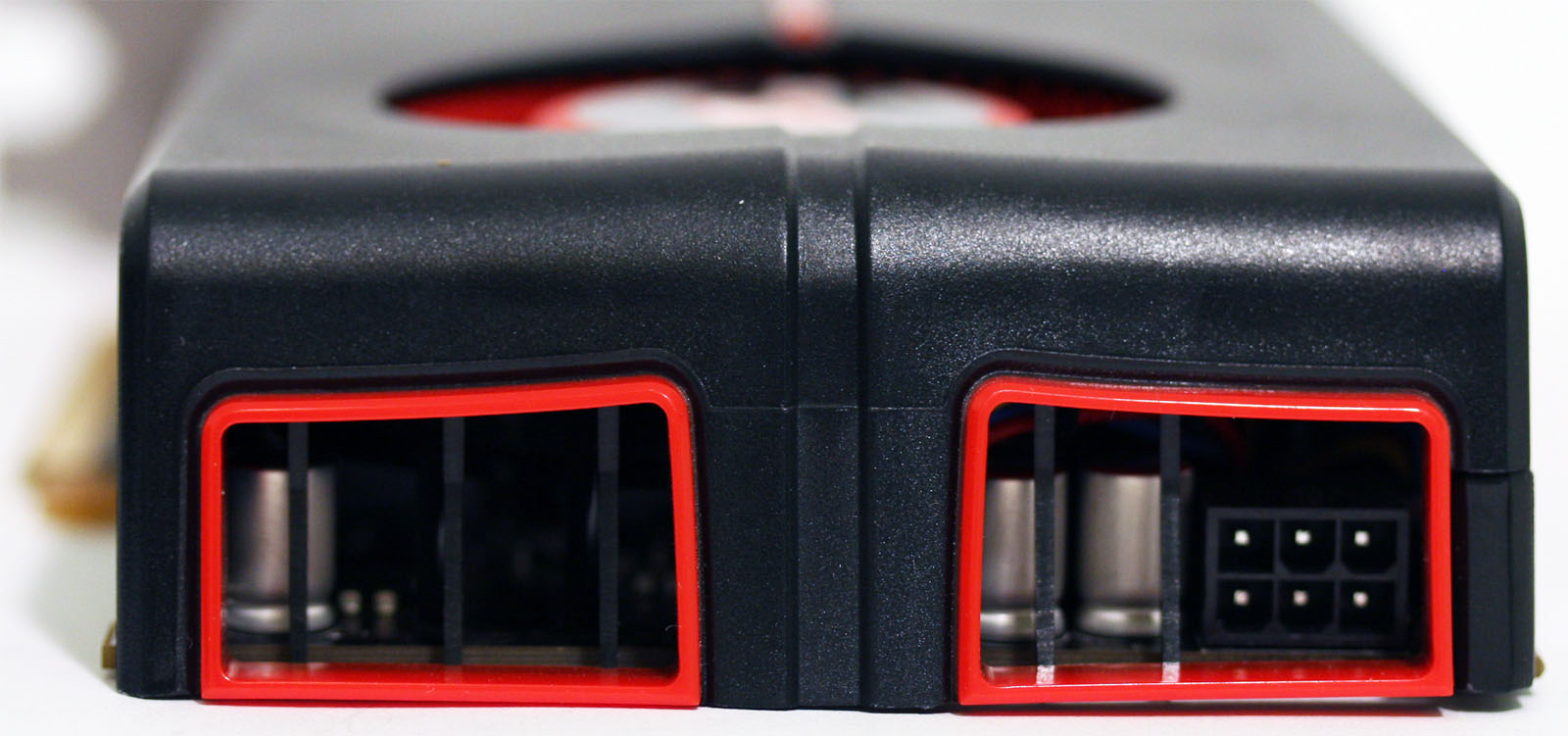
We were already blown away by ATI’s efforts to minimize power consumption with the Radeon HD 5870 and 5850. However, the smaller Juniper die is even more miserly. At idle, the Radeon HD 5770 is rated at just 18W (down from the 5850’s 27W and the 4870’s ravenous 90W). Under load, the Radeon HD 5770 uses just 108W (versus the 5850’s 151W). Already you can see how this might be the world’s most perfect HTPC card. But wait…there’s more.
ATI’s Radeon HD 5850 sports an entirely different design. Up until now, all of the 5000-series cards have featured enclosed shrouds with blower-type coolers that exhaust air from a vent on each card’s I/O bracket. The Radeon HD 5750 sports a simpler dual-slot heatsink/fan combination. The PCB is shorter still at 7.25,” and it likewise comes equipped with a single auxiliary power connector.
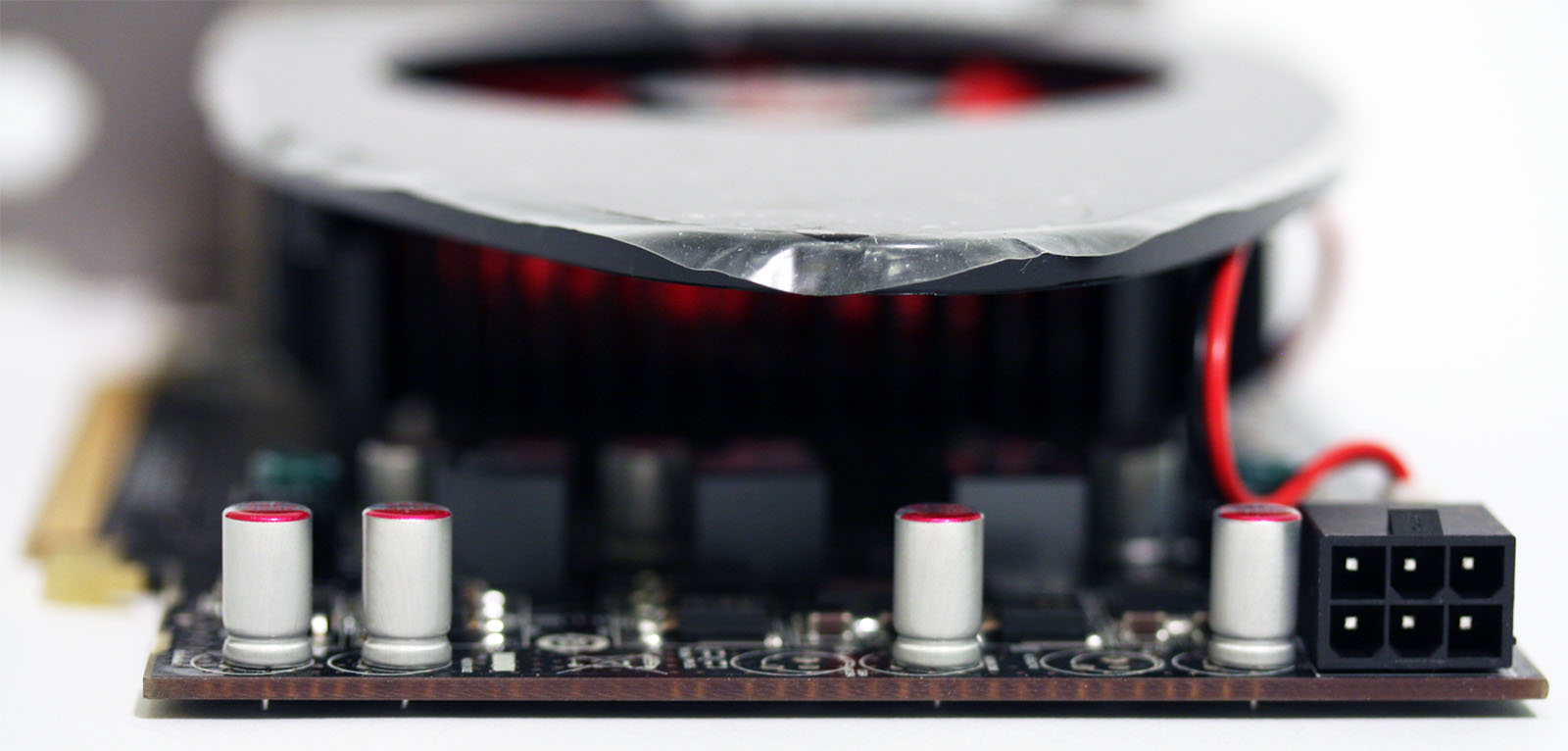
This could be an even better solution for big-screen gamers and theater enthusiasts. Lower clocks and a simpler cooling implementation mean a slightly more conservative 16W idle footprint, and a load requirement of up to 86W. As we’ll see in the benchmarks, this is no speed demon (at the risk of ruining several pages worth of data, it’s a bit quicker than a Radeon HD 4770); however, you’ll find that’s often enough to play at 1920x1080. And the addition of Eyefinity/bitstreaming really makes the 5750 a shoo-in for quiet environments in need of performance and better functionality.
Current page: ATI’s Radeon HD 5770 And 5750
Prev Page Introduction Next Page TrueHD/DTS-HD Bitstreaming: It Works!-
masterjaw Nice one, but the charts are a bit cluttered without giving emphasis on the featured cards (bold fonts, etc). A media card that could do games pretty good.Reply
I'm quite agree with the nvidia's G92 still hanging around but looking at their newly released cards (gt220, 210), I don't know what to say anymore. Hopefully, they're making the right choices at the right time. -
megamanx00 Looks to me like the 5770 really needs faster memory speeds, though that would defeat trying to make it cheaper, and perhaps a higher core clock. Perhaps we'll see some factory overclocked cards with memory that can reach a significantly higher speed.Reply -
JohnnyLucky Power consumption, temperature, and noise levels are very encouraging. I just finished reading other reviews where the 5700 cards are described as mid-level and mainstream cards.Reply
-
buzznut If I was building today (htpc), I would still go with a HD4670. Who knows six months from now...Reply
Those other features are compelling. If I could afford 2 more monitors that is. -
cangelini Summer Leigh CastleCan we BOLD or change the color of the card that's being reviewed?Reply
For sure--I've looked into this and would be happy to implement, but haven't had much luck. Any Excel gurus able to get only certain axis labels bolded without changing the entire series? -
noob2222 Replyand bitstreaming HD audio in an HTPC (a reason to buy a second card for the living room).
Personally I use my main computer as my HTPC, after all, I can't play games and watch movies from 2 different rooms at the same time, and all it takes is the HDMI cable (at least until they make it wireless.) -
cangelini That works as well. But for someone with a triple-head setup *and* an HTPC, I can justify both usage models.Reply -
lashabane I'm looking to upgrade from my dated 3850 and was thinking that these would really impress me for the price. I'm thinking I'll just spend the bit extra and get the 5850 when the prices come down.Reply
Of course, I wouldn't have been able to make such an informed decision so early if it weren't for TH and columnists such as yourself.
Thanks for another great article Chris. -
ambientmf What's the benefit of DirectX 11 capabilities if the cards are worse performing than last gen cards in DX9/10 games? I'd rather get a 4800 series card, being a gamer myself, for slightly better framerates.Reply
I can see the other benefits for the hardcore HTPC crowd though.
